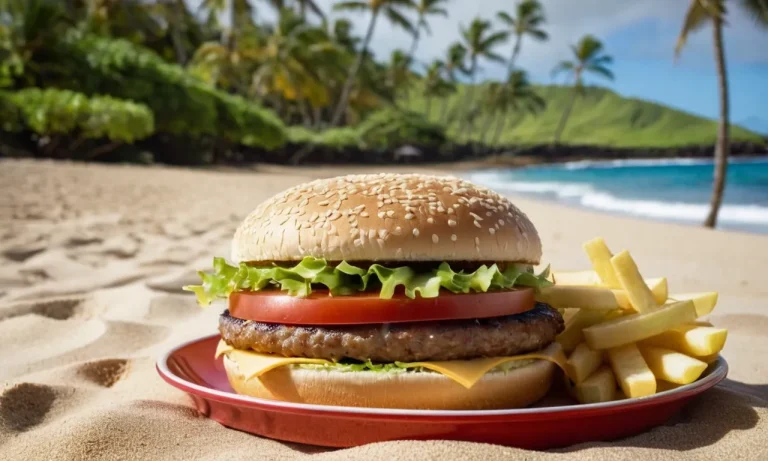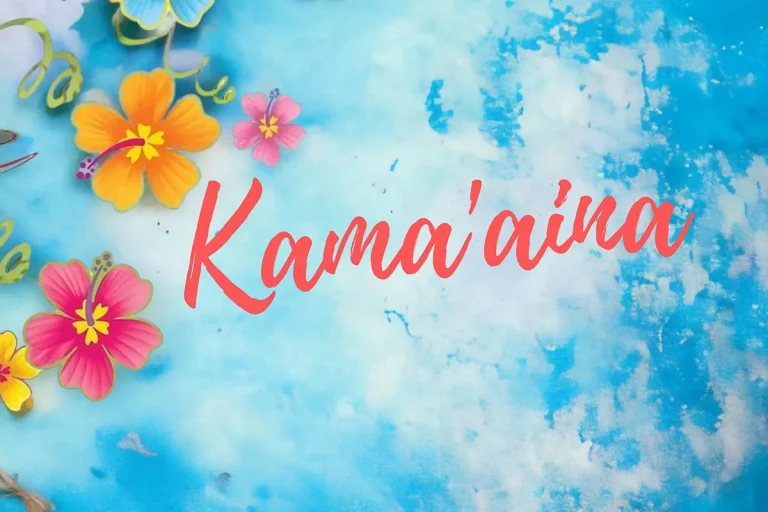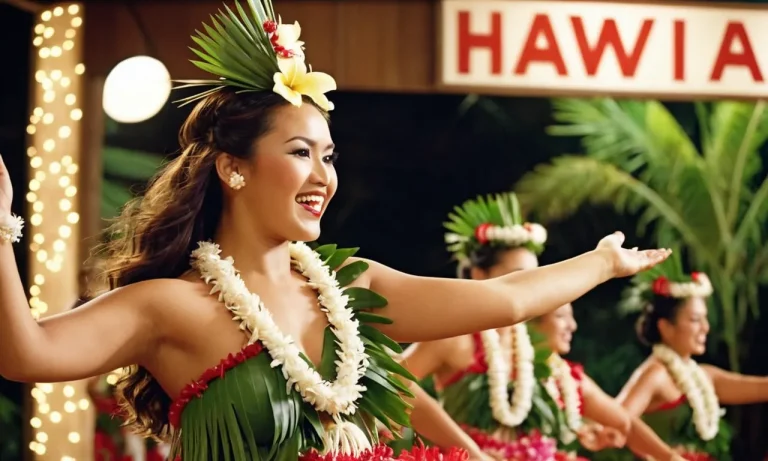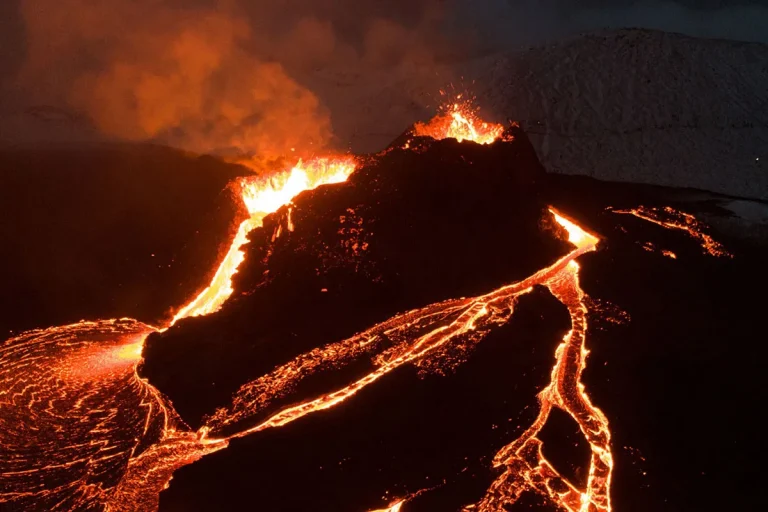Save money on your next flight
Skyscanner is the world’s leading flight search engine, helping you find the cheapest flights to destinations all over the world.
The tropical beaches and laid-back vibes of Hawaii seem a world away from the mainland United States. But geographically speaking, could the island chain actually be considered part of the U.S. West Coast? It’s an interesting question to ponder for those looking to settle an argument or just gain deeper insight into America’s 50th state.
If you’re short on time, here’s a quick answer: While Hawaii is located in the Western region of the United States, it is not considered part of the West Coast, which refers specifically to the continental states of California, Oregon, and Washington along the Pacific Ocean. Hawaii is situated far out in the Pacific, closer to Asia than to North America.
In this in-depth article, we’ll look at Hawaii’s unique geographic, cultural, and political history to understand its relationship to the continental West Coast and its standing as the only truly island state. We’ll examine map projections, plate tectonics, Hawaiian native culture, patterns of Westward expansion, and more to provide a comprehensive answer to this compelling geographic question.
Hawaii’s Geographic Separation from the Continental U.S.
Hawaii, a tropical paradise in the Pacific Ocean, is often a subject of curiosity when it comes to its geographical location. While it is a part of the United States, Hawaii is not considered part of the West Coast. Let’s explore the reasons behind Hawaii’s distinct geographic separation from the continental U.S.
Located 2,400 Miles from California
One of the key factors that sets Hawaii apart from the West Coast is its significant distance from the continental U.S. The Hawaiian Islands are situated approximately 2,400 miles southwest of California. This vast expanse of ocean creates a physical separation that contributes to Hawaii’s unique identity.
The geographical isolation of Hawaii has played a crucial role in shaping its ecosystem, culture, and history. It has allowed for the development of a diverse range of plant and animal species found nowhere else on Earth, making Hawaii a hotspot for biodiversity.
Distinct Geographic Identity
Another reason why Hawaii is not considered part of the West Coast is its distinct geographic identity. The Hawaiian Islands are volcanic in origin, formed by a series of eruptions millions of years ago. This volcanic activity has given rise to stunning landscapes, including majestic mountains, lush rainforests, and breathtaking beaches.
Hawaii’s unique geography and topography make it stand out from the coastal regions of the continental U.S. The islands are known for their iconic landmarks such as the towering peaks of Mauna Kea and Mauna Loa, the dramatic cliffs of the Na Pali Coast, and the world-famous Waikiki Beach.
Part of Polynesia, Not North America
Furthermore, Hawaii is not only geographically distinct but also culturally and historically connected to the Polynesian region rather than North America. The islands have a rich indigenous heritage dating back thousands of years, with the native Hawaiian people tracing their ancestry to Polynesian voyagers who settled in the archipelago.
It’s important to recognize that Hawaii’s cultural roots lie in Polynesia, encompassing traditions, language, and customs that are different from those found on the West Coast. This cultural diversity adds to the allure and charm of Hawaii, making it a fascinating destination for visitors from around the world.
The Geologic History and Origins of the Hawaiian Islands
The Hawaiian Islands have a fascinating geologic history that sets them apart from the rest of the West Coast. Let’s delve into the origins of these beautiful islands and understand how they came to be.
Formed by Volcanic Hot Spot
The Hawaiian Islands were formed by a volcanic hot spot, which is a fixed location in the Earth’s mantle where magma rises to the surface. This hot spot has been active for millions of years, resulting in the creation of the Hawaiian archipelago. The islands were formed as a result of countless volcanic eruptions, with each eruption adding layers of lava and ash to the existing landmass. This volcanic activity is ongoing, with the most recent eruption occurring on the Big Island of Hawaii in 2018.
Tectonic Plate Movement
The movement of tectonic plates also played a significant role in the formation of the Hawaiian Islands. The Pacific Plate, on which the islands rest, is moving in a northwesterly direction. As the plate moves, it carries the volcanic hot spot along with it. This movement has resulted in the creation of a chain of islands, with the oldest islands located in the northwest and the youngest islands in the southeast. The Big Island of Hawaii, being the youngest and currently over the hot spot, is still experiencing active volcanic activity.
Unique Geologic Features
The geologic features of the Hawaiian Islands are unique and diverse. Each island offers a different landscape, ranging from lush rainforests and waterfalls to barren lava fields. The islands are also home to impressive geological formations such as the famous Diamond Head on Oahu and the towering cliffs of the Na Pali Coast on Kauai. The islands’ volcanic origins have also given rise to stunning beaches with black, green, and red sand. Additionally, the islands are surrounded by coral reefs, which provide habitat for a rich diversity of marine life.
For more information on the geologic history of the Hawaiian Islands, you can visit the United States Geological Survey website.
Native Hawaiian Culture and Polynesian Roots
Hawaii, often referred to as the “Paradise of the Pacific,” is a unique place that is deeply rooted in Native Hawaiian culture and Polynesian traditions. The indigenous people of Hawaii, known as Native Hawaiians, have a rich history that dates back centuries. Their vibrant culture and close connection to the land and sea have shaped the islands into what they are today.
Settled by Polynesian Voyagers
The story of Hawaii begins with the brave Polynesian voyagers who navigated the vast Pacific Ocean to reach these remote islands. These skilled seafarers set out on their voyages using only the stars, ocean currents, and the flight patterns of birds as their guides. It is estimated that the first Polynesians arrived in Hawaii around 1,500 years ago, marking the beginning of the Native Hawaiian culture.
Through their impressive navigation skills, the Polynesian voyagers not only discovered Hawaii but also other Polynesian islands, such as Tahiti, Samoa, and Tonga. This remarkable feat of exploration demonstrates the immense seafaring capabilities of the Polynesians and their desire to explore and settle new lands.
Developed in Isolation
Once the Polynesians arrived in Hawaii, they found a land abundant in natural resources and a climate that supported sustainable agriculture and fishing. Over time, the Native Hawaiians developed a unique society and culture, adapting to their isolated island environment.
Isolated from the rest of the world, the Native Hawaiians developed their own language, traditions, and beliefs. They created a complex social structure, with chiefs (ali’i) ruling over different regions, and a system of land division known as ahupua’a, which allowed for sustainable management of resources. The Native Hawaiians also developed sophisticated agricultural techniques, such as terraced farming and fishponds, to ensure the survival and prosperity of their communities.
Unique Cultural Traditions
The Native Hawaiian culture is characterized by its strong connection to nature, reverence for ancestors, and rich oral traditions. Their cultural practices and customs have been passed down through generations, preserving their unique heritage.
One of the most well-known aspects of Native Hawaiian culture is hula, a traditional dance form that combines movement, chant, and storytelling. Hula serves as a way to honor the gods, tell stories of the past, and celebrate the beauty of the Hawaiian islands.
The Native Hawaiians also have a deep respect for the land and its resources. They believe in the concept of “aloha ‘āina,” which means love and care for the land. This philosophy encourages sustainable practices and stewardship of the environment.
To this day, Native Hawaiian cultural traditions are celebrated and embraced by both residents and visitors. Festivals, ceremonies, and cultural events showcase the beauty and richness of the Native Hawaiian culture, allowing people to experience the spirit of aloha and gain a deeper understanding of Hawaii’s unique identity.
For more information on Native Hawaiian culture and the Polynesian roots of Hawaii, visit www.nativehawaiianculture.com.
Hawaii’s Place in U.S. History and Expansion
When discussing Hawaii’s place in U.S. history and expansion, it is important to understand the unique circumstances that led to its inclusion as part of the United States. Contrary to popular belief, Hawaii is not considered part of the West Coast. Let’s delve into the historical background to better understand why.
Annexed as Strategic U.S. Territory
In 1898, Hawaii was formally annexed by the United States, primarily due to its strategic location in the Pacific Ocean. At the time, the United States was expanding its presence in the Pacific and recognized the significance of Hawaii as a key naval base. This decision was also influenced by the economic potential of Hawaii’s sugar industry, which had strong ties to American business interests.
The annexation of Hawaii was not without controversy, as it sparked debates over imperialism and the rights of indigenous peoples. However, the strategic and economic interests prevailed, leading to Hawaii becoming a U.S. territory.
Westward Expansion Halted
While Hawaii’s annexation was a significant event in American history, it is essential to note that it occurred after the era of westward expansion had largely come to a close. The West Coast, consisting of states such as California, Oregon, and Washington, had already been settled and incorporated into the United States. Hawaii’s inclusion did not contribute to the westward expansion of the continental United States.
Late Statehood Compared to West Coast
Despite its annexation in 1898, it took several decades for Hawaii to achieve statehood. The delay in granting Hawaii statehood is often attributed to various factors, including cultural differences, political considerations, and World War II. As a result, Hawaii did not become the 50th state until August 21, 1959, making it the last state to join the union. This timeline contrasts with the West Coast states, which had achieved statehood much earlier.
It’s worth noting that while Hawaii is not considered part of the West Coast, it does share some similarities and connections with the region. Geographically, Hawaii is located in the Pacific region, and it has cultural and economic ties with the West Coast states.
To learn more about Hawaii’s history and its place in the United States, visit history.com.
Modern Distinctions Between Hawaii and the West Coast
While Hawaii and the West Coast of the United States are both located in the Pacific Ocean, there are several key differences that set them apart. These differences can be seen in the regional cultures and attitudes, variations in climate and ecology, and political differences between the two regions.
Differing Regional Cultures and Attitudes
Hawaii has a unique and diverse cultural heritage that sets it apart from the West Coast. With its rich history of indigenous Hawaiian culture, as well as influences from Asian, Polynesian, and American cultures, Hawaii has developed a distinct identity that is reflected in its art, music, and traditions. The West Coast, on the other hand, is known for its multiculturalism and progressive attitudes, with cities like San Francisco and Los Angeles being renowned for their diverse populations and liberal values.
Despite the geographical proximity, there are notable differences in the attitudes and values of the people living in Hawaii and the West Coast. For example, Hawaii is often associated with a laid-back and relaxed lifestyle, while the West Coast is known for its fast-paced and ambitious culture. These contrasting attitudes can be seen in everything from work-life balance to social interactions.
Variations in Climate and Ecology
One of the most obvious distinctions between Hawaii and the West Coast is the climate. Hawaii enjoys a tropical climate with warm temperatures year-round, while the West Coast experiences a Mediterranean climate with mild, wet winters and hot, dry summers. This difference in climate has a significant impact on the ecology of the two regions.
Hawaii is home to a diverse range of plants and animals, many of which are found nowhere else in the world. The islands’ isolated location and unique ecosystems have fostered the evolution of numerous endemic species. In contrast, the West Coast is characterized by its coastal ecosystems, including sandy beaches, rocky cliffs, and expansive forests. The region is known for its biodiversity, with a variety of wildlife and plant species.
Political Differences
Politically, Hawaii and the West Coast have different affiliations and priorities. While the West Coast states tend to lean more liberal and Democratic, Hawaii has a more mixed political landscape. The state has a history of electing both Democratic and Republican representatives, and its political climate is influenced by a range of factors, including its diverse population and unique cultural heritage.
It is important to note that these differences are generalizations and that there is a great deal of diversity within both Hawaii and the West Coast. However, these distinctions help to highlight the unique characteristics and identities of each region.
Conclusion
In reviewing the evidence, it’s clear that while Hawaii falls under the broader Western region of the United States, the island chain stands apart from the West Coast states in numerous geographic, geologic, cultural, and historical respects. Hawaii’s remote location in the Pacific, indigenous Polynesian heritage, unique wildlife, and late statehood chronology affirm its status as America’s island outlier, 2,400 miles removed from the California coast.
The aloha spirit infuses Hawaii with a tropical character distinct from mainland urban centers like Los Angeles and Seattle. For islanders, the question of Hawaii’s possible West Coast status remains largely academic, overshadowed by their state’s breathtaking natural scenery, welcoming culture, and adventure-filled way of life. While not a West Coast state, Hawaii is undoubtedly one of America’s most treasured places, offering a Polynesian-flavored paradise in the heart of the Pacific.






